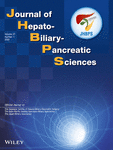Journal list menu
Export Citations
Download PDFs
EDITORIAL
ILLS 2019 and the development of laparoscopic liver resection in Japan
- Pages: 1-2
- First Published: 04 January 2020
ORIGINAL ARTICLES
Pure laparoscopic versus open hemihepatectomy: a critical assessment and realistic expectations – a propensity score-based analysis of right and left hemihepatectomies from nine European tertiary referral centers
- Pages: 3-15
- First Published: 16 August 2019

Laparoscopic hemihepatectomy offers several advantages over open hemihepatectomy. However, laparoscopic right hemihepatectomy and left hemihepatectomy, as well as laparoscopic hemihepatectomy for benign and for malignant disease, exhibit different benefits. Cipriani and colleagues highlighted the need for realistic expectations based on the laterality of the resection and the nature of the disease.
Feasibility of total laparoscopic living donor right hepatectomy compared with open surgery: comprehensive review of 100 cases of the initial stage
- Pages: 16-25
- First Published: 04 July 2019
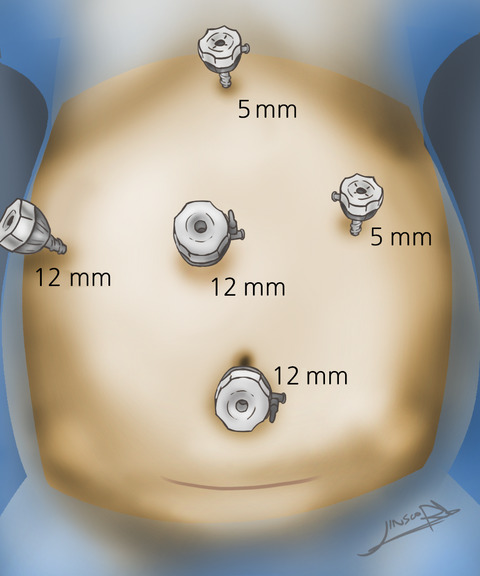
Although laparoscopic living donor hepatectomy can be beneficial in terms of donor recovery, it is prone to significant complications in the initial stage. Rhu and colleagues suggested careful donor selection and a well-established training course for introducing a laparoscopic donor program based on their data of 100 laparoscopic donor cases.
PLENARY SESSION
Liver retransplantation in adult recipients: analysis of a 38-year experience in the Netherlands
- Pages: 26-33
- First Published: 26 November 2019

Takagi and colleagues investigated liver retransplantation incidence, long-term outcomes, and risk factors in the Netherlands. Retransplantation rates have increased, but clinical outcomes are good after multiple retransplantations. Recipient age 60 years, early transplantation era, post-circulatory-death donor, and increased cold ischemia time were risk factors for retransplantation.
ANNOUNCEMENT
ISSUE INFORMATION - IFA
IMAGE OF INTEREST
Laparoscopic two stage hepatectomy: combined Glissonean approach of hepatic pedicles and dorsal approach of right and middle hepatic veins and vascular reconstruction
- Pages: E1-E2
- First Published: 25 June 2019
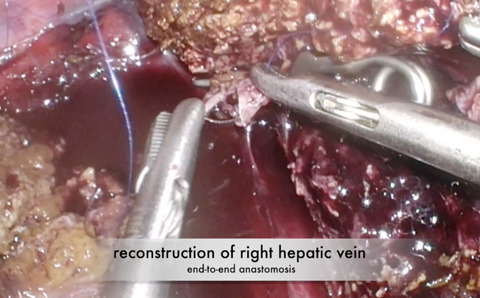
Major vascular involvement often constitutes a contraindication to the laparoscopic approach. Lopez-Ben and colleagues described a purely laparoscopic surgical technique consisting of two stages, eight weeks apart, utilizing the caudal view and proximal approach for complete removal of colorectal liver metastases in close proximity to all three hepatic veins.
Laparoscopic anatomic resection of segment 7 of the liver using the intrahepatic Glissonean approach from the dorsal side (with video)
- Pages: E3-E6
- First Published: 27 September 2019
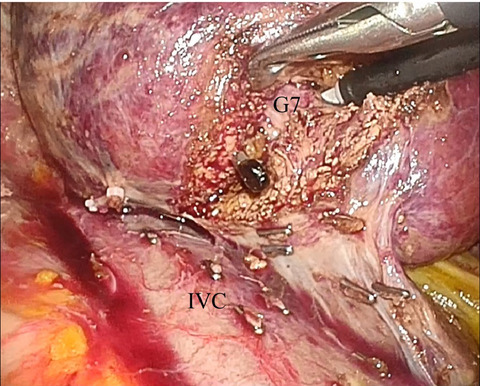
Laparoscopic anatomic resection of S7 is challenging. Ome and colleagues described an intrahepatic approach to the S7 Glissonean pedicles from the dorsal side without dissection around the hepatic hilum, allowing safe exposure of the right hepatic vein in the same view. This approach is safe and offers advantages for later hepatectomy.
Standardized laparoscopic central hepatectomy based on hilar caudal view and root approach of the right hepatic vein
- Pages: E7-E8
- First Published: 13 September 2019
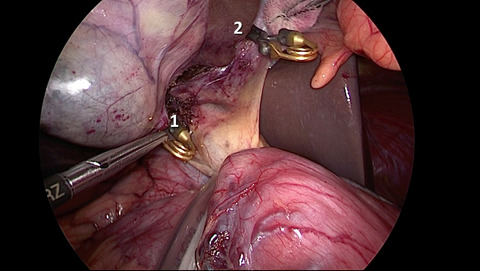
Central hepatectomy is one of the most difficult procedures to perform laparoscopically. Rotellar and colleagues described a standardized technique, tailored specifically to laparoscopy, which facilitates its safe performance based on three principles: no liver mobilization, initial Glissonean control (based on Laennec’s capsule approach) and root approach of the major veins.
Robotic caudate lobe liver resection following robotic left hepatectomy for cholangiocarcinoma
- Pages: E9-E10
- First Published: 31 July 2019
Sucandy and colleagues described their experience with robotic caudate lobe liver resection as a repeat operation after robotic left hepatectomy for intrahepatic cholangiocarcinoma. The robotic platform, which provides superior 3D visualization and increased dexterity, greatly facilitates isolation and division of the short hepatic veins of the inferior vena cava.




